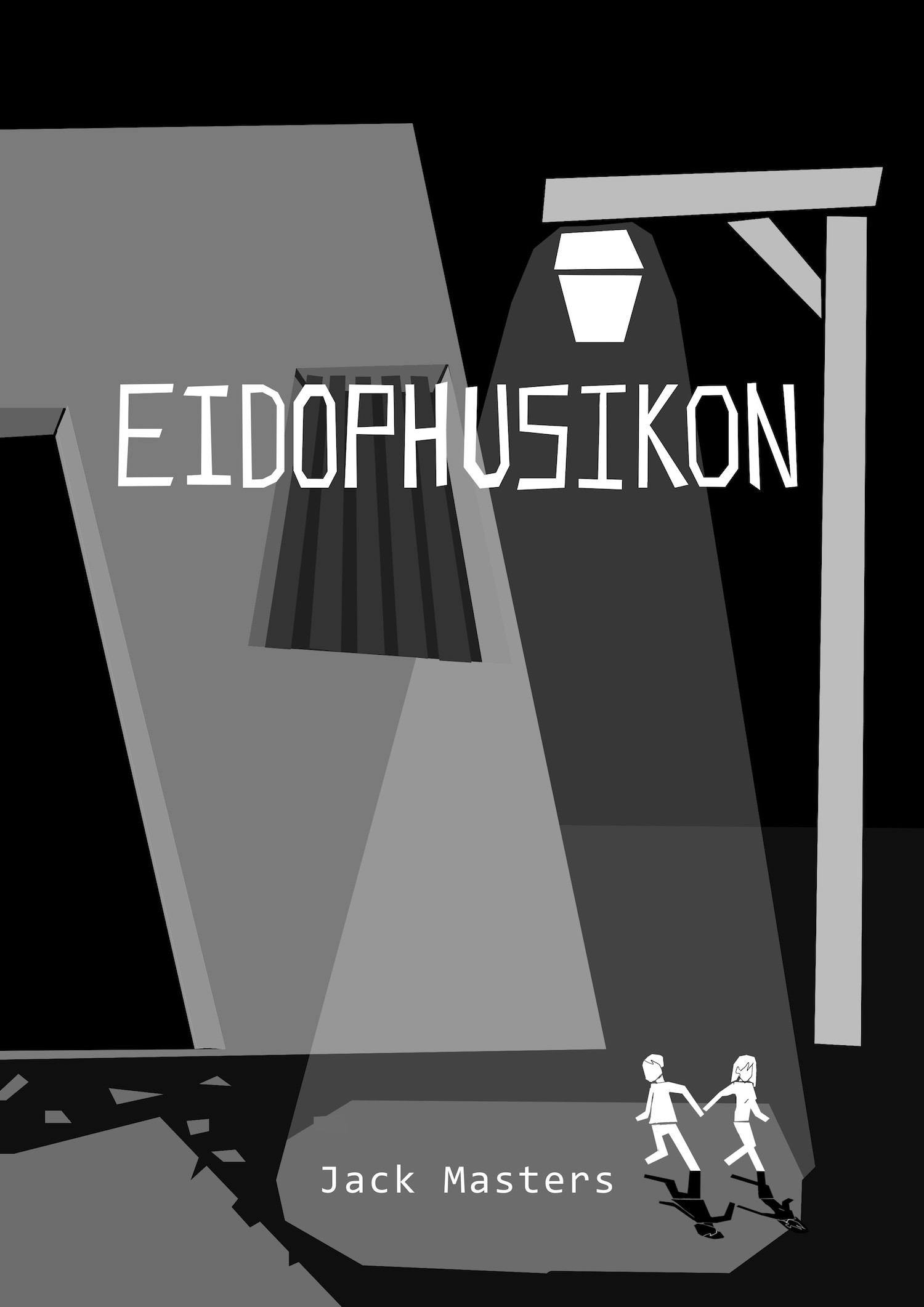The inventive and engrossing novel Eidophusikon has recently come to our attention here at MazeCast. And, OK, MAZE fanfiction may not the best way to describe it, but author Jack Masters is clearly a fan of MAZE and Christopher Manson. (For proof, skip to the excerpt at the end of this post.)
It’s hard to describe Eidophusikon, and it probably ruins the (seemingly intentionally) disorienting experience of reading it to try to explain too much about it, so I’ll keep the spoilers to a minimum. The author seems to feel the same way: the book’s online description reads only, “A private investigator disappears, leaving behind a cryptic text that leads her brother on a strange and perilous search.” The brother in question is John Tanis, whose attempts to find out what happened to his sister quickly land him at the centre of a weird web of events and characters, some straight out of myth and fairy tale.
It sounds like a fantasy detective story, but that kind of label doesn’t really explain what this book is. The perspective shifts, the chronology is unpredictable, and the story (stories?) are woven through with diverse references-folk music, The Bible, video games, fairy tales, films-and of course, MAZE. There are puzzles, too-although it’s hard to tell which might be fairly solvable. Eidophusikon plays with the conventions of fiction and your expectations as a reader, making it a challenging but exciting read. If you are a fan of House of Leaves or The Raw Shark Texts you will probably enjoy this book.
Fair warning, though. I will say that Eidophusikon is not for the faint of heart. It has violent and frightening bits and it is definitely not for kids.
In the end, the best way to explain the book is to let you read it, so I’m including an excerpt from Part 3, De Vega’s Run. Here’s the setup: private detective Danielle Tanis has entered an impossible, mazelike edifice-The Lab-and is trying to make her way to the centre with the questionable aid of a guide with oddly formal demeanour and speech. Along the way Danielle faces riddles that, if solved, can help her decide which way to go.
Eidophusikon is available to download for pay-what-you-want at Smashwords. Or you can buy it for $0.99 at Amazon.
To accompany you on your foray into The Lab (excerpt below), please enjoy this selection from Beck-another artist Masters seems to like.
“That arena,” Danielle started, “does that mean-?”
“Not here,” I said. “No metaphors yet.”
We were coming close, though, to the end of this cycle.
“I think the sage is next,” I said, changing the subject. “It knows all. You could begin thinking of questions, if you like.”
“Will it answer?”
“Every question will receive an answer, though fools often doubt the sage’s response.”
“And the wise?”
“They don’t waste time talking to plants.”
“Plants?”
“Salvia divinorum, sage of seers.”
The hallway opened up onto a subway station. A train was waiting for us. Before it, on the platform, was the sage plant. It was massive, the size of a banana tree, with flowers and leaves of every color.
“Does it truly know all?” Danielle asked me.
“Why don’t you find out?”
She approached the plant.
“What is happening on the Moon?” she asked.
The sage shook softly. A leaf detached and floated to the floor. Danielle picked it up.
Written on the leaf was, “The Moon is moot. Most must be dust.”
Danielle showed me the leaf. “This can’t be right. Not yet.”
I nodded. “You may be correct. But enough foolishness. Ask the real question.”
Danielle didn’t approve of my authoritarian tone, but she grudgingly complied.
“Alright, plant,” she said. “Which way to the center?”
The sage shook, much more violently this time. Danielle stepped back a few feet. When its convulsions ceased, the sage had dropped seven leaves.
Danielle collected the leaves and arranged them on the floor. We sat next to them, and studied the phrases written on them:
“ye bold and brazen slaves”
“tether ye boat and crew”
“the rat-catching minions that Satan shat and birthed”
“gold ye gather”
“beside the galliers do seat themselves”
“the desolate winds beat torment in your sails”
“do seethe among us, as they shit upon us still”
Even after Danielle understood what the sage was telling us, she wasn’t sure what to do with the information. Eventually, we decided to board the train.
We entered the first car. The doors opened and closed of their own volition.
There were no seats or handrails, no windows, no graffiti, and no other passengers. There were only buttons and plates.
Each button was placed on a one-inch-by-three-inch steel plate. Each plate had one word written on it. Every square inch of the walls and ceiling was coated with plates. It did not take a second for us to realize that every word began with an A; it took not much longer to understand that the words were arranged in alphabetical order.
Danielle followed the words to the back, and then pushed through a doorway into the next car. I followed.
There seemed to be no rationale for the inclusion or exclusion of particular words. I located (through personal curiosity) “alisfakia,” “ārstniecības salvija,” and “adaçayı”; but common words such as “akha” and “al-waqi” were conspicuously absent.
We passed through many cars before we found the words beginning with B.
I didn’t count the cars we traversed before Danielle found the correct button. It was a long walk, but the time seemed to fly by, perhaps due to the inherent entertainment of the situation.
When she pushed the button, the train sprang forward. As we were thrown to the back of the car, lightning began to flash between the ceiling and floor.
-Jack Masters, Eidophusikon

